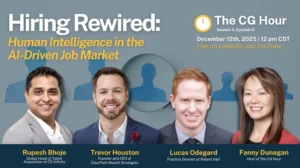Should More Companies Deploy Large Language Models as a Customer Service Tool?
So much of customer service is just anticipating customers needs. Businesses need to know when clients need more information, when their needs will increase, and what issues will arise along the way. It is in this very anticipation, this proactivity, that large language models and generative AI like GPT-3 shine. At its most basic, all generative AI does is predict the next word in a sentence, phrase, or even fully formed paragraph or essay. With ChatGPT’s rise to mainstream relevance, businesses are starting to experiment with the role of large language models as a customer service tool.
There has long been a desire to join customer service and automation, if not specifically generative AI, because of AI’s ability to synthesize data and create predictions in real time. For example, integrating large language models into a business’ operations could notify logistics professionals of a shipping delay and allow them to proactively let customers know without lifting a finger. GPT-3’s ability to anticipate customer’s needs and provide tailor-made responses at scale could be a game changer for businesses large and small.
Nate Sanders, the CEO and founder of customer experience forecasting company Artifact.io, is bullish on this customer-centric use case for ChatGPT and other generative AI tools. In fact, the company is already leveraging large language models as a customer service tool for internal operations and for clients’ benefit.
Nate’s Thoughts:
“I think that the role that advanced artificial intelligence, and in particular these large language models like GPT-3 are going to have on the enterprise, is primarily around information synthesis and human augmentation. So first of all, the ability for these large language models to be able to make just in time information retrieval fast and incredibly actionable is very unprecedented, so they’re going to be able to, these frontline workers are gonna be able to understand, orient, and act faster than they’ve ever been able to in the past. You’re gonna see things like workflows and processes that normally required a lot of handoffs or walled gardens to teams that had insights and data techniques, they’re gonna be increasingly eliminated.
Artifact has leveraged large language models to create incredibly advanced topic models and CX insights for unstructured voice of customer data. We’re able to be able to use all of the unique and powerful natural language understanding capabilities of these models so that we can extract and we can model and quantify customer intent in a really actionable way. So as an example, rather than the historical text analytics output of packaging problem, our customers are able to be able to measure and quantify a topic like my ‘produce has arrived, spoiled because the packaging seal is broken’. So, teams are able to respond, diagnose, and build around these really actionable topics faster than ever.
It’s actually really hard for us to be able to quantify how much impact that GPT-3 and these large language models have had on our business because they’ve enabled us to be able to create a product that wasn’t possible even just a few years ago. So, we have an enormous amount of success that we attribute directly to the innovation and the capabilities of the advancements in natural language processing that are coming from companies like OpenAI and the NLP community at large.”
Article written by Graham P. Johnson.








